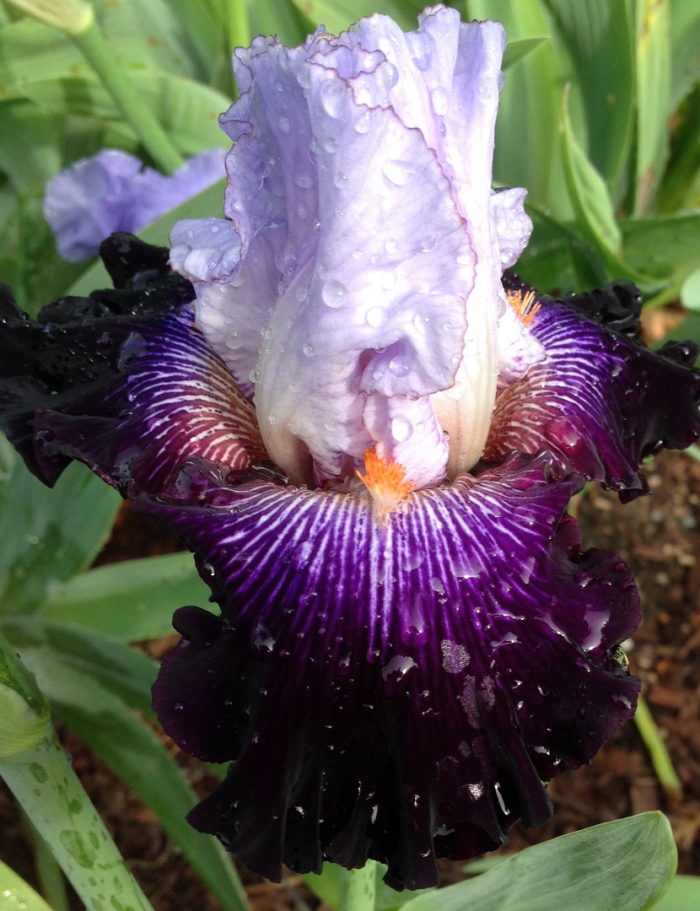
Stuart Boone shared these images of his friend Mary’s bearded iris garden in Red Bluff, California. Bearded irises are sometimes called Iris germanica, though modern bearded irises are actually complex hybrids of several different species. Hardy from Zones 4 to 9 and notably deer resistant, bearded irises are adapted to a wide range of climates. However, they are a particularly great choice for dried climates, like Mary’s California garden. This is because bearded irises are extremely drought tolerant.
Those of us in wetter parts of the country can, of course, grow them as well. In wetter, more humid conditions, bearded irises are susceptible to unsightly foliar fungal diseases. While these diseases don’t kill the plant, they can have the leaves looking pretty ragged by the end of the summer. If your iris foliage gets tired looking by the end of the season, you can look for more disease resistant cultivars, or simply plant late summer or fall blooming perennials in front of them to screen the leaves in the latter half of the year.
There are a staggering number of bearded iris varieties out there, with around a thousand new varieties being registered each year. Stuart did not have the names for these varieties from Mary’s garden, and with so many possibilities out there; it is nearly impossible to determine the exact name for the varieties shown. The good news is, with so many varieties to choose from, there is a bearded iris for everyone, no matter your tastes!
Thank you, Stuart, for sending in these beautiful photos of Mary’s bearded iris garden.
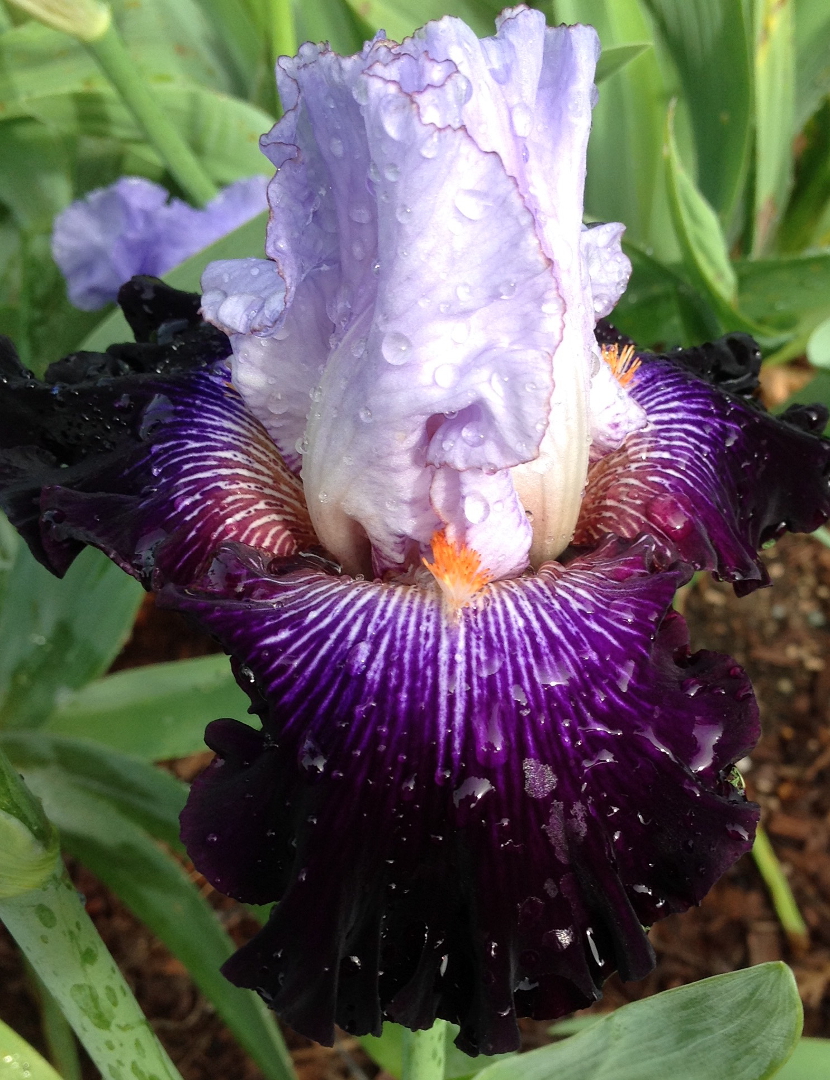
Bearded irises with blue or purple falls (lower petals) and paler standards (upper petals) as here are sometimes called “neglectas,” named after an old iris variety from 1815 that showed this pattern.
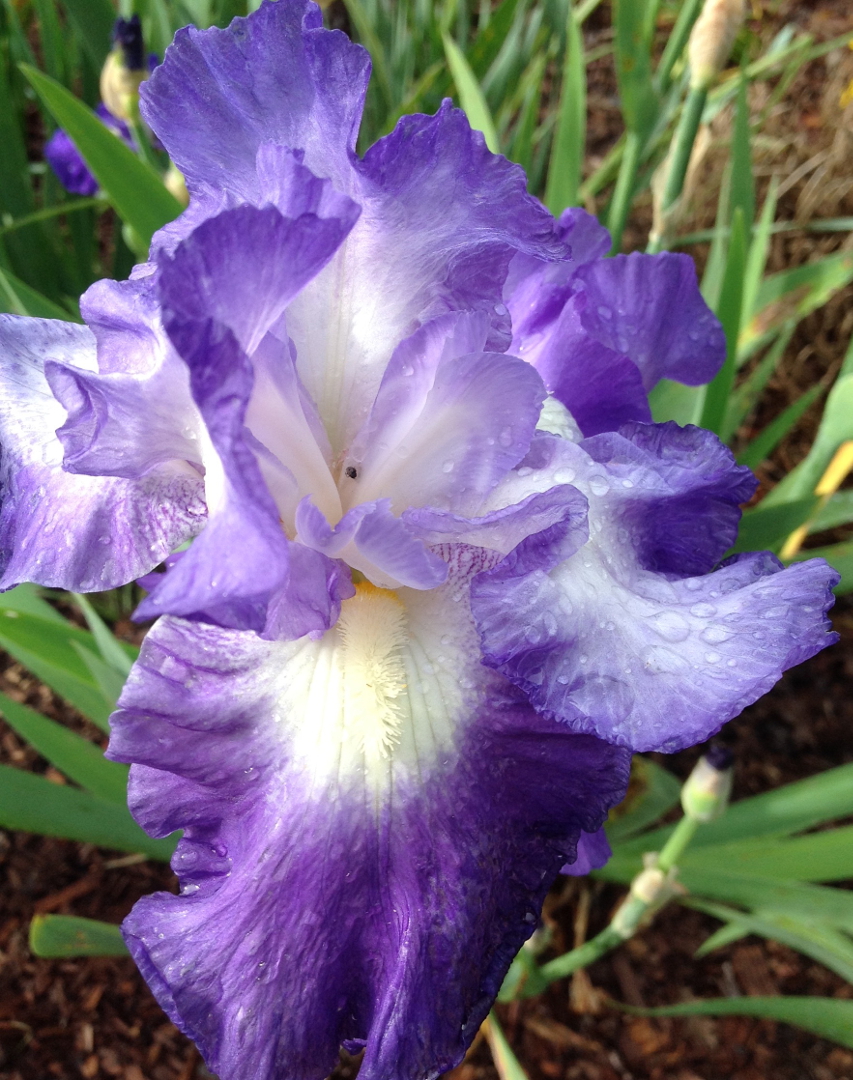
A lovely froth of lavender-blue petals.
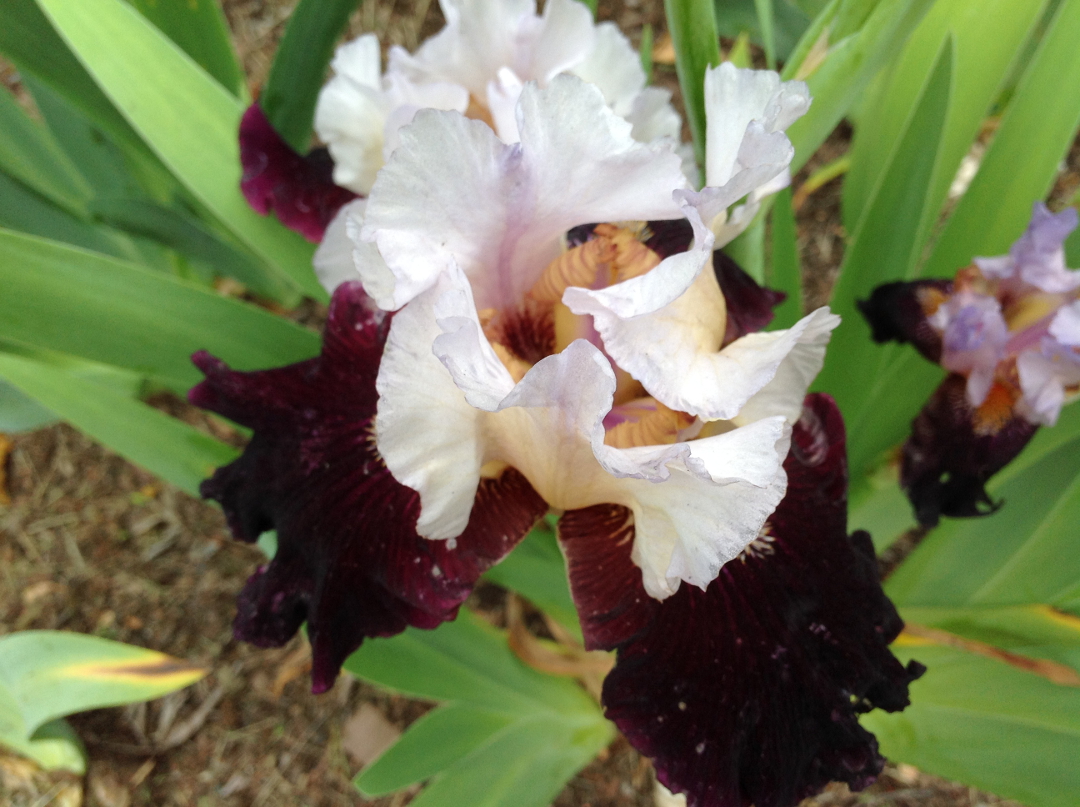
Irises with white standards and darker colored falls, like this striking white-and-wine colored individual, are called “amoena” irises.
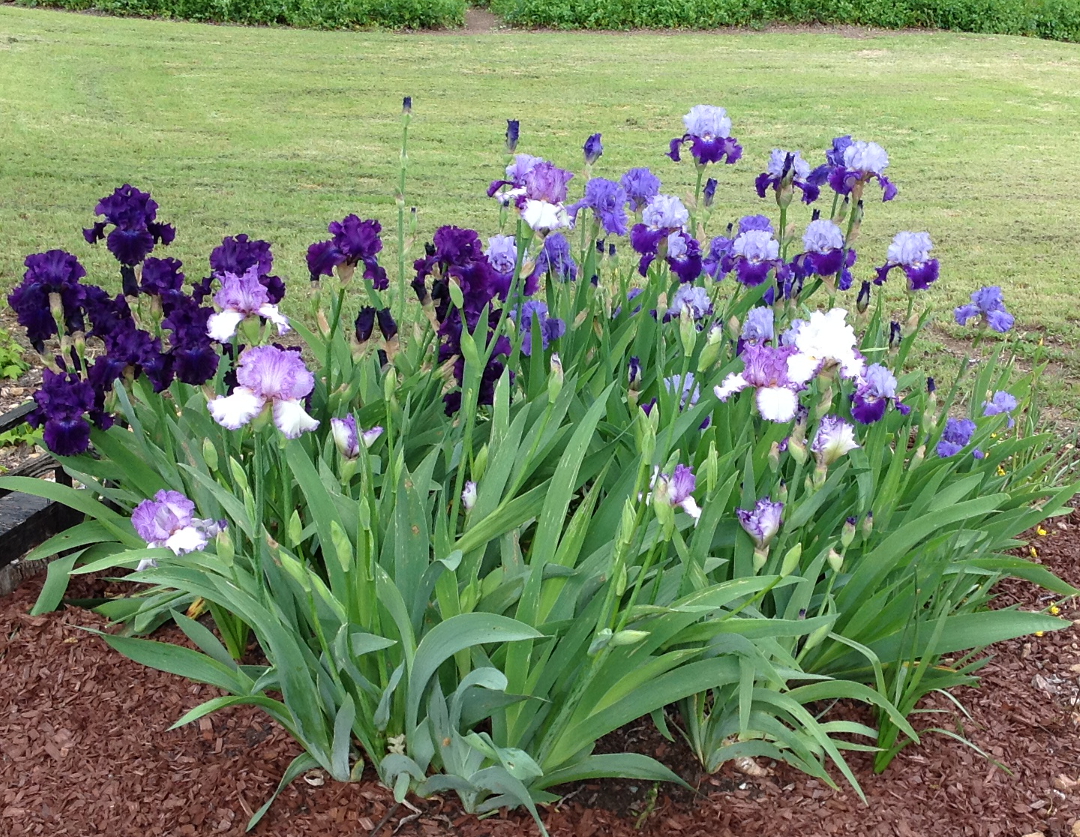
Masses of bearded iris in full bloom.
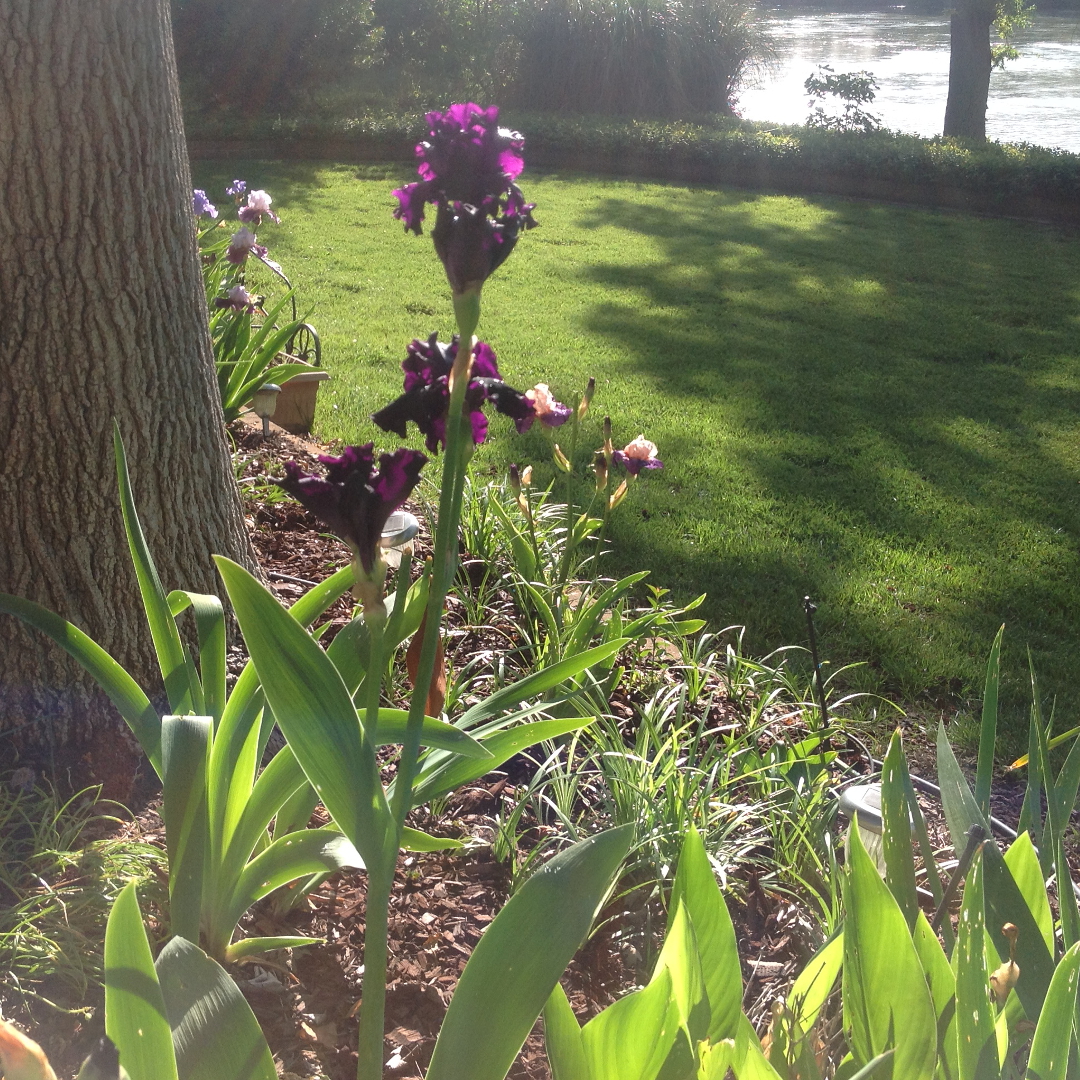
A dark purple iris glows with the sun behind it.
Check out these articles for more information on drought-tolerant and deer-resistant plants:
Creating a Low-Maintenance Garden
Planting Plan: A deer-resistant bed that shines in fall and winter
Have a garden you’d like to share?
Have photos to share? We’d love to see your garden, a particular collection of plants you love, or a wonderful garden you had the chance to visit!
To submit, send 5-10 photos to GPOD@finegardening.com along with some information about the plants in the pictures and where you took the photos. We’d love to hear where you are located, how long you’ve been gardening, successes you are proud of, failures you learned from, hopes for the future, favorite plants, or funny stories from your garden.
If you want to send photos in separate emails to the GPOD email box that is just fine.
Have a mobile phone? Tag your photos on Instagram or Twitter with #FineGardening!
You don’t have to be a professional garden photographer – check out our garden photography tips!
Do you receive the GPOD by email yet? Sign up here.
Fine Gardening Recommended Products

Corona® Multi-Purpose Metal Mini Garden Shovel
Fine Gardening receives a commission for items purchased through links on this site, including Amazon Associates and other affiliate advertising programs.

Dramm 17050 50′ ColorStorm 1/2″ Standard Soaker Hose
Fine Gardening receives a commission for items purchased through links on this site, including Amazon Associates and other affiliate advertising programs.
- Conveniently waters garden and beds
- 50 ft. by 1/2 inch diameter made from recycled material; lifetime guarantee
- Made in the USA

Planting in a Post-Wild World: Designing Plant Communities for Resilient Landscapes
Fine Gardening receives a commission for items purchased through links on this site, including Amazon Associates and other affiliate advertising programs.



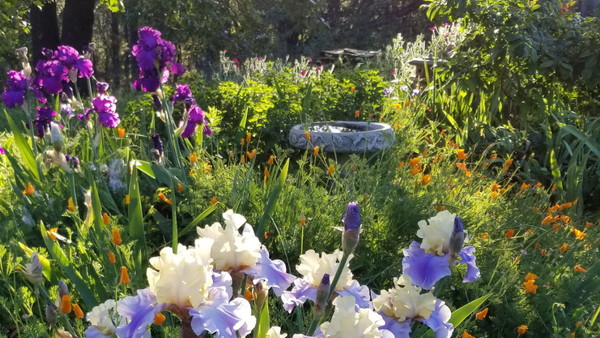
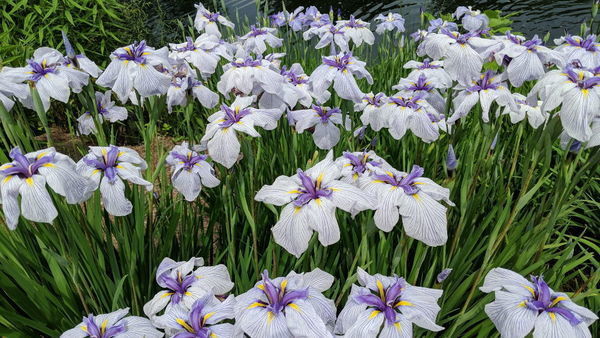













Comments
They are so very pretty. Foliage & flowers look so clean.
Beautiful photos of beautiful subjects, Stuart. If I wasn't already a fan of tall bearded iris, I would be converted after drooling over your pictures. Your neighbor looks like she has a very lovely setting in which to garden with that body of water as a backdrop.
Lovely! I especially like the large grouping and also, the last photo which shows a fantastic setting! Thanks for sharing!
Stuart, thanks for sharing pictures of your neighbor's lovely bearded iris. The up close photos show so much detail, including the little beards. Love the variety of colors and color combinations. Pretty landscape.
Stuart, your photos of your neighbor's iris are stunning. I love both the individual portraits and the group shot. It is nice to learn some of the group names - I presume we are in debt to Joseph for that? In our bed, the iris fill a very difficult spot, a narrow bed between a sidewalk and a stone wall, with shallow rocky soil, in full sun. Their wonderful foliage continues to look good long after the flowers fade.
Had not heard that iris might be deer resistant. Yippee! Got to add some. Thanks.
I had tons of bearded, Japanese and Siberian irises in my NJ garden - so far not having the best of luck in the NC clay although I amended carefully before planting... good foliage, but not looking good in the bloom department.
Oh wow....Beautiful. Thanks for sharing. Need to get some bearded irises. I've stuck to the Siberian irises so far. My challenge has always been what to do when these ones finish blooming as their floppy foliage doesn't do much for me (except iris pallida which has variegated interest.)
Wonderful pictures! Can you tell me the name of the first pic featured?
It should be Snowed In, from 1998 or 9, bred by Joseph Glio. A friend of mine did extensive research to identify mine, which looks exactly like the one pictured. I inherited it from my grandmother. It has a wonderful scent. Breck’s still sells. Very long bloom period. It is just as beautiful as the picture makes it out to be. Hope you get to experience it in person, bellarosa009.
Log in or create an account to post a comment.
Sign up Log in